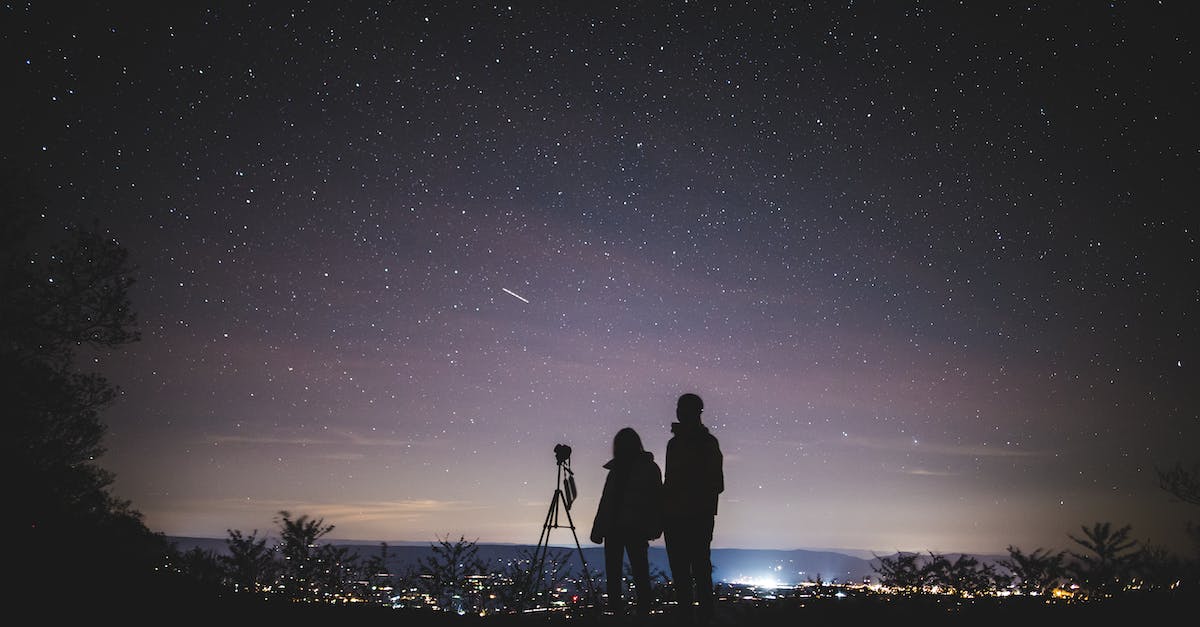This site contains affiliate links to products. I may receive a commission for purchases made through these links.
Ever look up at the night sky and get lost in its mesmerizing beauty? I sure have! Stargazing is not just a hobby, it’s an experience that connects us with the universe. But finding the perfect spot to gaze at the cosmos can be a challenge.
That’s why I’ve embarked on a journey to scout out the best stargazing locations. Places where city lights don’t obscure the view, and you can see the stars in all their glittering glory. I’m excited to share my findings with you, so you too can enjoy the celestial wonders above us.
Exploring the Dark Skies
As my journey unfolded, I found myself deeper into the world of stargazing, an aspect I couldn’t help but become passionate about. The darker the skies, the brighter the stars. These locations possessing minimal light pollution were my prime targets, aiming to provide fellow stargazers with unequaled experiences.
Believe it or not, certain places across our planet offer the luxury of dark skies that reveal much more than the usual “top-star” sightings. I found dark sky parks to be among these appealing locations, with some even recognized by the International Dark-Sky Association (IDA).
For instance, the Headlands Dark Sky Park in Michigan offers a stunning 550-acre expanse that has seen numerous amateur and professional stargazers alike, gasping in awe at the celestial spectacle. Similarly, Kerry International Dark Sky Reserve in Ireland boasts an expansive overdose of darkness that the Milky Way’s majestic spread becomes visible to the naked eye.
By delving into astronomy forums and connecting with astrophotographers, I managed to unearth lesser-known stargazing locations. These hidden gems included alpine retreats tucked away in the mountains, remote beaches offering unspoiled views of the night sky, and even desert settings, where the lack of humidity brings about a crystal-clear view of the cosmic beyond.
Everyone’s journey to discovering stargazing needs a starting point. Here’s mine, marked down in a table with crucial facts about promising dark sky locations:
| Location | Feature |
|---|---|
| Headlands Dark Sky Park, Michigan | 550-acre expanse, recognized by the IDA |
| Kerry International Dark Sky Reserve, Ireland | Visible Milky Way with naked eye |
| Alpine retreats | Secluded settings in mountainous terrain |
| Remote beaches | Clear, unspoiled skyline |
| Desert areas | Humidity-free clarity |
Remember, every stargazing spot will offer a different experience. And while these locations grant an optimal view of the celestial wonders, the true beauty of the experience lies in the journey. The exploration, the moments captured, and the connections forged along the way, make up the real magic of stargazing.
Factors to Consider
Now that we’ve shared some promising dark sky locations for prime stargazing, let’s take a step back and talk about the factors that can significantly impact your sky-gazing experience. Sure, you’ve got your scope set on the heavens, but a few earthly elements are crucial for a stellar experience.
Darkness is, undoubtedly, the most critical factor. It’s difficult to see past the stars illuminating our cities, towns, and roads. Places with minimal or no light pollution, known as Dark Sky Parks, offer the best views. If you’re not near one, a new moon phase is the perfect time for stargazing, as the moon’s light doesn’t outshine the stars.
Don’t overlook topography while scouting the skies. Elevated locations, such as alpine retreats or high desert areas, are often free from humid, low-lying air that can blur celestial views. In contrast, coastal sites can provide open, unrestricted views over the ocean.
Weather is a flip-of-the-coin factor. Clear skies are optimal for stargazing. Yet, seasonal variations and unpredictable weather can impact visibility. Consider the forecast when planning a stargazing trip.
Accessibility rounds out our list. Frequently, the best stargazing spots are somewhat off the beaten path. But, finding that balance between seclusion and accessibility is key. Can you reach the location safely? Is there a comfortable spot to set up your equipment?
I’ve found it’s these factors, when carefully considered, that elevate a decent stargazing experience into something magnificent. Dark skies, ideal topography, favorable weather, and easy accessibility work together to create a stargazing environment where the celestial magic truly shines.
While I have hinted at a few choice locations, adventure awaits. Get out there, scout the skies, and let the cosmos be your guide.
Location 1: Joshua Tree National Park
A must-mention stargazing experience is offered by the Joshua Tree National Park. Nestled in Southern California’s high desert, this spot brings forth an unfathomable depth of the cosmos under its ink-black blanket. It’s no fault of the stars themselves that they often go unnoticed; the true fault lies with our human-made lights. Yet, within Joshua Tree’s borders, artificial light becomes scarce making stargazing here an unperturbed experience.
What sets Joshua Tree apart from many other stargazing locations? It offers one of the darkest nights in Southern California due to its remote nature and minimal light pollution. Surrounded by vast expanses of wilderness, its inky skies offer a vantage point into celestial majesty that’s hard to match.
Looking up from Joshua Tree is like looking through a cosmic window. The constellations come to life, planets align, shooting stars blaze across the sky; each is so wonderfully detailed that they all feel within arm’s reach. On clear, moonless nights the experience intensifies tenfold, taking the viewer on a visual journey through the cosmos.
Ease of accessibility also makes Joshua Tree a stargazer’s paradise. It’s about a 2-3 hour drive from Los Angeles or Las Vegas, making it relatively easy for city dwellers to escape the city lights. Once inside the park, countless viewing spots dot the park’s 794,000 acre landscape. Be it tucked within the rugged landscape or atop a hill; each spot offers an unforgettable perspective of the twinkling stars.
Joshua Tree is more than just a stargazing location; it’s a journey that promises to show you just how celestial beings dance in the vast expanse of the sky. Equipped with a bit of patience, a warm blanket, and an ever-wondering eye, the sky becomes your own personal observatory. It’s about time we discover these astronomical gems right in our own backyards.
Note: Always check the current park conditions before planning a trip as the weather in the high desert can be unpredictable. A clear sky one second can turn into a star-obscuring overcast the next.
Location 2: Mauna Kea, Hawaii
Mauna Kea in Hawaii is my next star-blanketed destination. It’s renowned as one of the premier stargazing locations globally, with its altitude and clear atmospheric conditions. At an astonishing elevation of over 14,000 feet, it’s safe to say that I’m literally closer to the stars. The atmospheric clarity provided by being this high above sea level is unparalleled.
Here, atop this dormant volcano, I found the Mauna Kea Observatories. They’re home to the world’s most advanced astronomical research institutions, operated by scientists from eleven countries. As a result, it’s not just a star-gazer’s delight, but a hub of scientific discovery.
Do you know, the University of Hawaii at Hilo conducts free stargazing tours regularly? It’s a spectacular opportunity to peer into the cosmos using the same high-powered telescopes that professionals use!
It’s worth mentioning the unique dual heritage of Mauna Kea. Not only is it an astronomical research precinct, but the summit of the Mauna Kea volcano has deep cultural significance for the native Hawaiian population. Therefore, while enjoying the celestial spectacle, visitors need to be respectful and mindful of its sacred roots.
| Important Facts | Details |
|---|---|
| Elevation | Over 14,000 feet |
| Observatories | Operated by scientists from eleven countries |
| Free stargazing tours | Conducted by the University of Hawaii at Hilo |
| Cultural significance | Sacred site for Hawaiian population |
The best part? The Big Island has it all! From white sandy beaches to snow-capped volcanic peaks. After a day of sun and surf, I found the trek to Mauna Kea’s summit to be an extraordinary wind-down. Don’t forget, the weather conditions can flip quite significantly, so pack warm clothes and the current time schedule to get the most out of your star-gazing adventure.
So, Just as Joshua Tree in southern California illuminates our cosmic senses, the beauty of Mauna Kea goes beyond its telescopic might – it’s an ethereal experience that binds the land, sea, and sky. So if you’re in for a celestial chase, Hawaii’s Big Island – and specifically, Mauna Kea – should be on your list.
Location 3: Atacama Desert, Chile
I get to travel to some of the most breathtaking corners of the world, chasing the stars, and the Atacama Desert in Chile has certainly won a place in my heart. Frequently dubbed the driest place on Earth, this stretch of land offers stark, lunar-like landscapes that seem tailored for lovers of the cosmos like me.
The Atacama Desert’s location on the Tropic of Capricorn and its high altitude (some parts are over 13,000 feet high) contribute to some of the clearest skies in the world. A location is only as good as its cloud-free nights, right?
At least 300 nights of the year here are cloudless, offering pristine views of celestial objects that might be obscured elsewhere. This stunning clarity makes the Atacama Desert a hotspot for both amateur and professional astronomers alike.
The ALMA Observatory
The ALMA Observatory resides in Atacama, ranking among the world’s most remarkable astrophysical research facilities. Operated by an international partnership – including North America, East Asia, and Europe – ALMA has dish antennas with spans up to 39 feet. This impressive piece of technology allows glimpses into the Universe that are second to none.
For those interested, guided visits to the ALMA site take place on weekends. It’s an experience I would recommend everyone to try at least once.
But the Atacama Desert isn’t just about the sky. Its terrain is considered to be comparable to Martian landscapes, so much so that it’s often used as a testing ground for invasions to Mars.
Sounds like an adventure, doesn’t it? There’s just so much more to Atacama that waits to be explored, beyond the stars. As you continue planning your celestial journey, keep this extraordinary location in your consideration — you won’t regret it.
Location 4: NamibRand Nature Reserve, Namibia
Venturing from the stark landscapes of the Atacama Desert, my celestial journey led me to the dark skies of Namibia. NamibRand Nature Reserve in Namibia stands amongst the top tier of stargazing spots on our beautiful blue planet.
NamibRand, one of the largest private reserves in southern Africa, stretches out over an impressive 215,000 hectares. It’s a sanctuary teeming with wildlife, majestic sand dunes, and rocky outcrops. Yet, it’s when night falls that this reserve elevates to a whole new dimension, when the daylight creatures retreat and the stars take the main stage.
This vast reserve is privileged to have one of the darkest skies measured on earth, gaining it’s International Dark Sky Reserve (IDSR) status. The sparse population, remote location, and strict control of artificial light contribute to the darkness of the sky. These conditions are prime for catching the Milky Way or a shooting star on a clear night.
It’s worth noting that the NamibRand reserve also houses the Namib Desert Environmental Education Trust (NaDEET). This center promotes sustainable living practices and environmental consciousness, ensuring the preservation of this unique astronomical haven.
While stargazing at NamibRand, immense constellations like the Southern Cross are easily visible to the naked eye, along with a host of heavenly bodies, distant galaxies and swirling nebulae. Astronomers often flock here to view the Magellanic Clouds, dwarf galaxies only visible from the Southern Hemisphere.
Our next destination on this astronomical globe-trotting journey will take us away from the sacred solitude of NamibRand. We’re moving to a haven located at the top of the world, in Northern Europe. Prepare to be dazzled by the green glows of natural wonder dancing across the very edge of the Arctic Circle.
Conclusion: The Perfect Stargazing Experience
So there you have it. I’ve taken you on a journey through the stars, from the heights of Mauna Kea to the depths of the Atacama Desert, and even to the dark skies of NamibRand Nature Reserve. These places aren’t just prime spots for stargazing, they’re also home to some of the best astrophysical research facilities in the world. They offer more than just a glimpse into the cosmos; they provide an opportunity to understand our place in it. As I venture to Northern Europe for my next stargazing adventure, I can’t help but feel a sense of anticipation. Who knows what celestial wonders await? But one thing’s for sure, wherever you choose to stargaze, the experience will be nothing short of magical.
Frequently Asked Questions
What are some of the best places for stargazing according to the author?
The author considers Mauna Kea in Hawaii, the Atacama Desert in Chile, and the NamibRand Nature Reserve in Namibia as some of the best stargazing locations.
What is the notable facility in Atacama, Chile for astronomical research?
The Atacama houses the ALMA Observatory, recognized for its significant contributions to astrophysical research.
What makes the NamibRand Nature Reserve a top-tier stargazing spot?
NamibRand Nature Reserve boasts clear, dark skies and is designated as an International Dark Sky Reserve. This allows a greater visibility of constellations and other astronomical bodies.
Does NamibRand Nature Reserve have other attractions besides stargazing?
Yes, the NamibRand Nature Reserve also houses the Namib Desert Environmental Education Trust, which promotes sustainable living practices.
What is the next destination of the author’s journey?
The author plans to explore a location in Northern Europe on their next journey, but no specific place is mentioned in the article.




